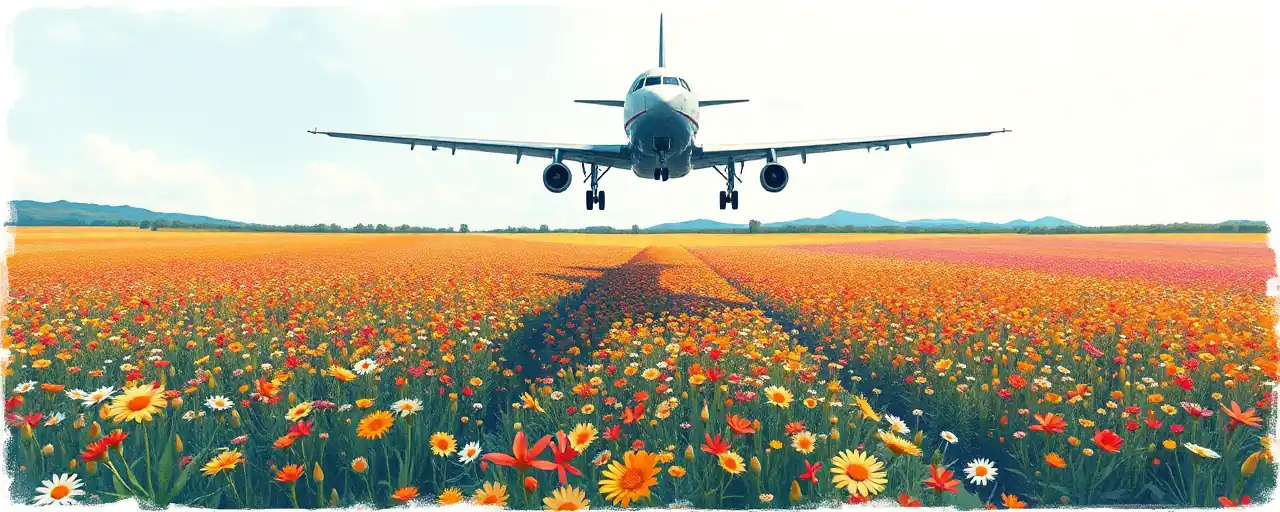A New Lens on Nature
High above California’s rugged coast, a research plane cuts through the sky, its instruments locked on a patchwork of wildflowers below. Scientists are using cutting-edge technology to track something as old as life itself: the blooming of plants. At NASA’s Jet Propulsion Laboratory, researchers have turned their gaze from distant planets to Earth’s own backyard, mapping how flowers unfurl across seasons. What they’re finding could change how we understand our planet’s response to a shifting climate.
Flowers, those fleeting bursts of color, are more than just a pretty sight. For countless species, from crops to desert shrubs, blooming syncs with the rhythm of seasons, driven by temperature, daylight, and rain. Now, with global temperatures climbing and weather patterns twisting, those rhythms are starting to falter. NASA’s latest study offers a fresh way to watch this unfold, using tools originally built to explore the cosmos.
Seeing Beyond the Human Eye
The star of this research is an imaging spectrometer, a device that captures light in hundreds of wavelengths, far beyond what humans can see. Mounted on aircraft, it swept over thousands of acres in California’s Jack and Laura Dangermond Preserve in 2022, tracking native shrubs like Coreopsis gigantea and Artemisia californica. From February to June, the instrument recorded the flowers’ spectral fingerprints, unique patterns of light reflection tied to their pigments. It’s the first time this tech has followed plants through an entire growing season, a feat researchers call groundbreaking.
Flowers owe their hues to chemicals like carotenoids, betalains, and anthocyanins, each bending light in distinct ways. By analyzing these patterns, scientists can pinpoint not just when blooms peak, but how they age and fade. The study nailed down 97% of the differences between flowers, leaves, and soil, hitting an 80% accuracy rate in spotting flowering stages. That precision opens a window into vegetation phenology, the timing of plant life cycles, and how it’s shifting under climate pressures.
From Fields to Farms
This isn’t just about wildflowers. About 90% of land plants rely on flowering, including staples like fruit trees, cotton, and nut crops. Farmers and land managers could use this data to predict yields or spot trouble early, especially as rising heat and erratic rains throw off traditional growing seasons. Yoseline Angel, a lead scientist on the project, sees potential in tracking superblooms, those rare desert explosions of color tied to heavy rains. Pairing spectrometer data with tools like EMIT, a mineral-mapping instrument on the International Space Station, might reveal how these events ripple through ecosystems.
Yet the tech isn’t flawless. Atmospheric haze can blur readings, and the gear doesn’t come cheap. Still, experts argue it’s a leap forward from old-school methods like field surveys or time-lapse cameras, which struggle to scale up. Historical efforts, from Landsat satellites in the 1970s to today’s drones, show remote sensing’s growing power. Add in AI to crunch the numbers, and you’ve got a system that could warn of crop stress or pollinator declines before they hit hard.
Plants, Pollinators, and People
Flowers don’t bloom in a vacuum. Bees, butterflies, and birds depend on them, and they, in turn, keep ecosystems humming, contributing trillions to global food production. Climate change complicates this dance. Studies since the late20th century reveal spring blooms creeping earlier, sometimes by days per degree of warming, while pollinators lag behind. In places like the Himalayas, rhododendrons now flower weeks ahead of schedule, a stark sign of trouble. Urban planners and ecologists point to native plantings as a buffer, but habitat loss and pollution still threaten the balance.
Citizen scientists are pitching in, too. Armed with apps like iNaturalist, they’ve logged up to 65% of global species sightings, feeding data to researchers like Angel, who tracks wildflower buzz on social media. It’s a grassroots boost to a high-tech effort, bridging lab work with real-world eyes. Together, they’re piecing together how plants and their partners adapt, or falter, as the planet heats up.
What Lies Ahead
NASA’s flower-tracking push is a small but sharp piece of a bigger puzzle. It builds on decades of Earth observation, from wildfire mapping to mineral hunts, all honed by JPL’s AVIRIS sensors. The results so far hint at a future where air and space tools keep tabs on nature’s pulse, offering hard data to those who steward the land. For now, the focus stays on refining the method, blending it with orbiting instruments and ground-level insights.
The stakes are real. As seasons blur and extremes like heatwaves or late frosts hit harder, understanding these shifts matters to everyone, not just scientists. Flowers might seem fragile, but their story, told through light and color, carries weighty clues about a world in flux. It’s a reminder that even in a warming age, there’s still time to listen to what the Earth is saying.
